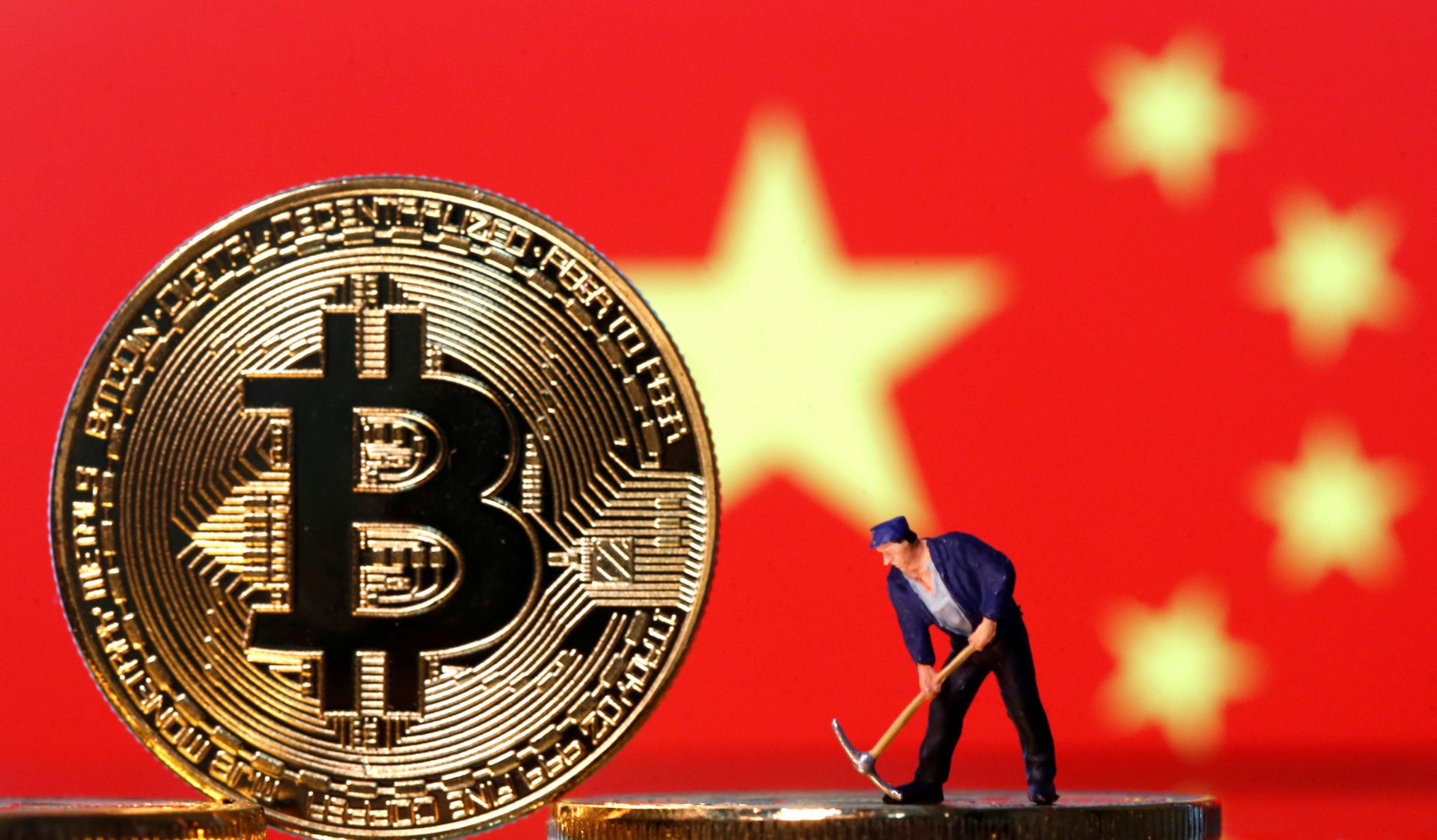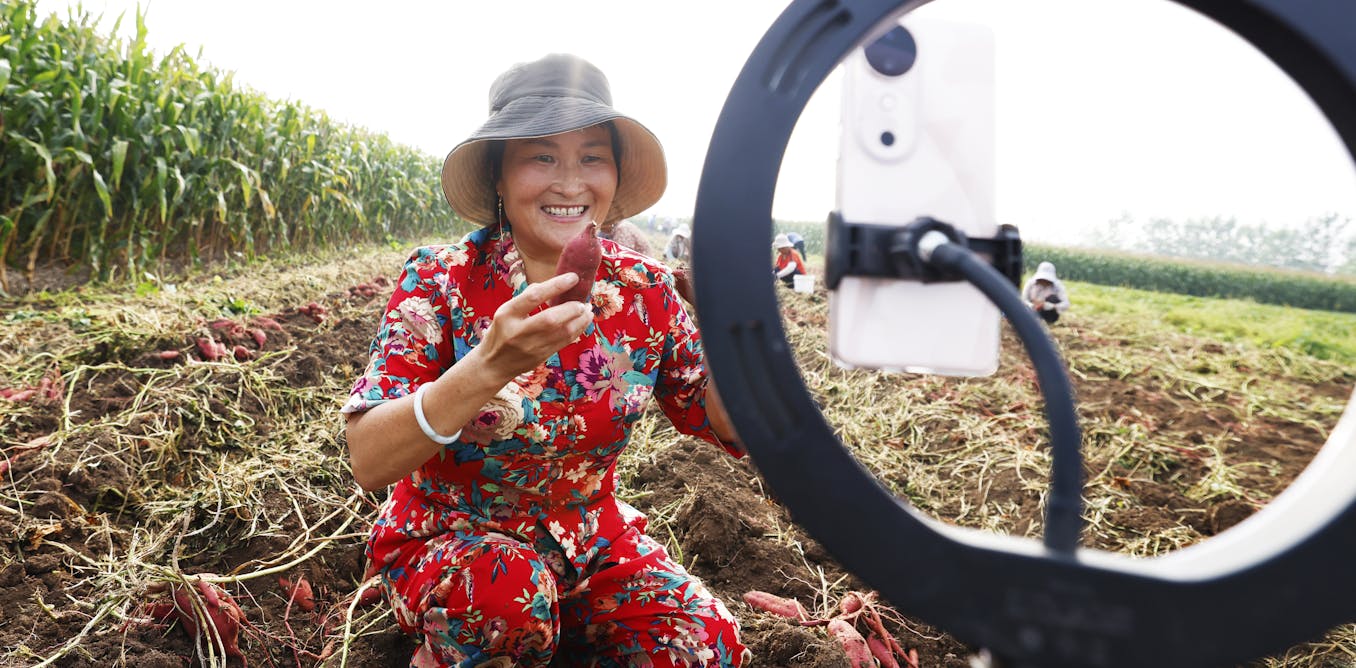China
US defense bill spends big against China’s maritime claims

U.S. President Joe Biden on Friday signed into law an $886 billion defense bill that includes US$16 billion to deter China’s expansive maritime claims and approves exemptions for Australia and the United Kingdom to buy American defense technology without licenses.
The 2024 National Defense Authorization Act was passed by the Senate on Dec. 18 in a 87-13 vote and by the House on Dec. 19 in a 310-118 vote, after a compromise removed supplemental funding for Ukraine along with contentious abortion and transgender provisions.
Senate Majority Leader Chuck Schumer, a Democrat from New York, last week called the compromise “precisely the kind of bipartisan cooperation the American people want from Congress.”
Biden said on Friday that parts of the compromise “raise concerns” but that he was “pleased to support the critical objectives” of the bill.
The legislation “provides the critical authorities we need to build the military required to deter future conflicts, while supporting service members and their spouses and families,” Biden said.
Maritime deterrence
The bill includes $14.7 billion for the Pacific Deterrence Initiative, well above the $9.1 billion requested by the Pentagon. The project, defense officials say, will help bolster U.S. defenses in Hawaii and the Pacific territory of Guam to increase “deterrence” efforts against China.
Bryan Clark, a senior fellow at the Hudson Institute and expert in naval operations, said the “big increase” in funds would help by “improving the resilience and capability of U.S. and allied forces in the Indo-Pacific.”
“I expect the increased PDI spending authorized in the NDAA will focus on defense of Guam, improved networking and data integration for U.S. forces in the Indo-Pacific, and accelerated efforts to posture U.S. ground troops in the region,” Clark told Radio Free Asia.
A further $1.3 billion is earmarked specifically for the Indo-Pacific Campaigning Initiative, which a Senate Armed Services Committee statement said would fund “increased frequency and scale of exercises, freedom of navigation operations, and partner engagements” as China ramps up its claims of sovereignty.
The 2024 bill also authorizes the biggest pay boost to military personnel in two decades, with a 5.2 percent overall bump, and increases the basic allowance for troops and housing subsidies.
AUKUS
It’s not only U.S. military bases and personnel in the Indo-Pacific that are receiving a large funding boost next year, though.
The 2024 bill also approves the sale of nuclear-powered submarines to Australia and exemptions for Australian and British firms from the need to seek licenses to buy U.S. defense technology.
The two provisions – known as “Pillar 1” and “Pillar 2” of the AUKUS security pact between Australia, the United Kingdom and the United States – have proved controversial, with some Republicans in Congress questioning Pillar 1 and some Democrats opposing Pillar 2.
Republicans expressed concerns about the ability of shipyards to supply Australia with submarines by the 2030s amid massive building backlogs that have left the U.S. Navy waiting on its own orders.

Democrats, meanwhile, said they were worried that exempting Australian businesses from the need to seek licenses could open up an avenue for Chinese espionage to procure sensitive U.S. technology.
But in the end the provisions passed with bipartisan support – even if the important licensing exemptions remain conditional on Australia and the United Kingdom putting in place “comparable” export restrictions.
Rep. Raja Krishnamoorthi, a Democrat from Illinois and the ranking member of his party on the House Select Committee on China, said that the approval of both pillars of AUKUS would be a boon to U.S. efforts to counter the Chinese Communist Party’s maritime claims.
“By authorizing the sale of up to three Virginia-class submarines to Australia, and simplifying the process for sharing advanced technologies between our countries, we are taking an important step in strengthening key U.S. alliances and working to maintain a free and open Indo-Pacific region in the face of CCP aggression,” he said.
Australian Defense Minister Richard Marles said that the passage of AUKUS meant that Australia, the United Kingdom and the United States are “on the precipice of historic reform that will transform our ability to effectively deter, innovate, and operate together.”
Australia’s ambassador to Washington, Kevin Rudd, said earlier this year he foresees a “seamless” defense industry across the AUKUS member states in coming decades if the security pact succeeds.
Other measures
The bill also establishes a new program to train and advise Taiwan’s military, and funds the Biden administration’s new “Indo-Pacific Maritime Domain Awareness Initiative,” which also is aimed at deterring China’s vast claims of maritime sovereignty.
U.S. Assistant Secretary of Defense for Indo-Pacific Security Affairs Ely Ratner said earlier this month would equip American allies across Asia and the Pacific “with high-grade commercial satellite imagery that allows them to have much more visibility into their littorals.”

Rep. Mike Gallagher, a Republican from Wisconsin and the chairman of the House Select Committee on China, said the bill was suitably focussed on the biggest threats currently facing the U.S. military.
“We are in the window of maximum danger when it comes to a conflict with China over Taiwan,” Gallagher said after the House passed the bill. “Ensuring our military has the resources to deter, and if necessary, win such a conflict must be our primary focus in Congress.”
Read the rest of this article here >>> US defense bill spends big against China’s maritime claims
Business
BRICS: China Classifies Crypto as Property and Prohibits Business Ownership

China’s Shanghai court ruled cryptocurrencies are property, boosting optimism in the crypto industry while maintaining a ban on business transactions. This may signal a shift in future regulations.
China’s Ruling on Cryptocurrency
In a pivotal decision for the nation and its BRICS alliance, China has officially classified cryptocurrency as property while maintaining prohibitions against business transactions involving digital assets. A notable ruling from the Shanghai Songjiant People’s Court affirmed cryptocurrencies as property, sparking optimism within the crypto industry regarding future regulations.
Implications for the Crypto Industry
As cryptocurrencies gain significance globally, the Chinese ruling is viewed as a potential-positive shift amidst ongoing restrictions. While individuals can hold virtual currency, businesses remain barred from engaging in investment transactions or issuing tokens independently. This decision has generated anticipation for more accommodating regulations in the future.
Future Prospects for Cryptocurrency in China
Experts like Max Keiser believe this ruling indicates China’s growing acknowledgment of Bitcoin’s influence. As BRICS nations explore increased cryptocurrency utilization in trade, this legal shift could enhance market demand and lead to greater acceptance of cryptocurrencies as a legitimate asset class, setting the stage for potential developments in 2025.
Source : BRICS: China Rules Crypto as Property, Bars Business Holdings
China
Digital Taxation in China: Effects on Corporate Tax Risk Management and Compliance Strategies

Tax digitalization in China enhances efficiency and accuracy in tax administration through AI and technology. Significant advancements include online services, e-invoicing, and data integration, improving risk management. The government targets further reforms by 2025 to establish a robust intelligent taxation system.
Tax digitalization, also known as “digitalized tax administration” or “tax administration by data,” is gaining momentum in China. Enabled by digital technologies and artificial intelligence, Chinese tax authorities have significantly improved the efficiency and accuracy of tax administration. As a result, tax risks are now easier to identify, and tax audits have become more focused and targeted.
The Chinese tax bureau has made significant efforts to advance tax administration through digital upgrades and intelligent transformation. By utilizing modern information technology, the tax authorities have established platforms such as the electronic tax bureau, which enables online processing of tax registration, filing, and payments. Additionally, the promotion of electronic invoicing and the Golden Tax IV system has improved the efficiency and accuracy of tax administration.
This digital landscape allows tax authorities to integrate data from various sources, including invoices, banking information, business records, and customs data. Such integration facilitates more accurate identification of potential tax risks.
This article explores the impact of tax digitalization on businesses in China, emphasizing the evolving dynamics of tax risk management, particularly regarding data supervision.
At the opening ceremony of the 5th Belt and Road Initiative Tax Administration Cooperation Forum on September 24, 2024, Hu Jinglin, Commissioner of the State Taxation Administration (STA) of China, delivered a speech outlining the efforts of Chinese tax authorities to enhance tax administration and efficiency. He emphasized the importance of advancing tax governance through data, highlighting the STA’s commitment to leveraging data and algorithms for intelligent tax management.
Currently, a pilot program for fully digitalized electronic invoices (e-fapiao) has been expanded nationwide, alongside the launch of a unified electronic tax bureau. Additionally, a smart office platform for tax personnel is under development. These systems aim to provide intelligent services for taxpayers and enable tax officers to deliver differentiated and precise services based on dynamic credit risk assessments.
Furthermore, according to a document released by the General Office of the CPC Central Committee and General Office of the State Council in 2021, titled “Opinions on Further Deepening the Reform of Tax Collection and Administration,” China aims to achieve significant progress by 2025 in reforming its tax administration system. In particular, it aims to establish a robust and intelligent taxation framework and develop a first-class intelligent administrative application system, thereby improving tax law enforcement, service, and regulatory capabilities.
| This article was first published by China Briefing , which is produced by Dezan Shira & Associates. The firm assists foreign investors throughout Asia from offices across the world, including in in China, Hong Kong, Vietnam, Singapore, and India . Readers may write to info@dezshira.com for more support. |
Read the rest of the original article.
China
Farms to fame: How China’s rural influencers are redefining country life

In Yunnan, influencer Dianxi Xiaoge redefines rural China’s image, showcasing pastoral life, bridging cultural gaps between urbanites and rural communities, and sparking interest through nostalgic content and government support.
In the quiet backwaters of Yunnan, Dong Meihua – though her followers know her by the public alias Dianxi Xiaoge – has done something remarkable: She’s taken the pastoral simplicity of rural China and made it irresistible to millions. In her hands, a village kitchen becomes a stage, and the rhythms of farm life become a story as compelling as any novel. She is one of many rural influencers returning to their roots.
In a digital revolution turning established narratives on their head, China’s countryside is emerging as an unlikely epicenter of viral content. Xiaoge is one of thousands of influencers redefining through social media how the countryside is perceived.
Upending preconceptions of rural China as a hinterland of poverty and stagnation, this new breed of social media mavens is serving up a feast of bucolic bliss to millions of urbanites. It is a narrative shift encouraged by authorities; the Chinese government has given its blessing to influencers promoting picturesque rural images. Doing so helps downplay urban-rural chasms and stoke national pride. It also fits nicely with Beijing’s rural revitalization strategy.
Hardship to revival
To fully appreciate any phenomenon, it’s necessary to first consider the historical context. For decades, China’s countryside was synonymous with hardship and backwardness. The Great Leap Forward of the late 1950s and early 1960s – Communist China’s revered founder Mao Zedong’s disastrous attempt to industrialize a largely agrarian country – devastated rural communities and led to widespread famine that saw tens of millions die.
The subsequent Cultural Revolution, in which Mao strengthened his grip on power through a broad purge of the nation’s intelligentsia, further disrupted customary rural life as educated youth were sent to the countryside for “reeducation.” These traumatic events inflicted deep scars on the rural psyche and economy.
Meanwhile, the “hukou” system, which since the late 1950s has tied social benefits to a person’s birthplace and divided citizens into “agricultural ” and “nonagricultural” residency status, has created a stark divide between urban and rural citizens.
The reform era of Mao’s successor, Deng Xiaoping, beginning in 1978, brought new challenges. As China’s cities boomed, the countryside lagged behind.
Millions of rural Chinese have migrated to cities for better opportunities, abandoning aging populations and hollowed-out communities. In 1980, 19% of China’s population lived in urban areas. By 2023, that figure had risen to 66%.
Government policies have since developed extensively toward rural areas. The abolition of agricultural taxes in 2006 heralded a major milestone, demonstrating a renewed commitment to rural prosperity. Most recently, President Xi Jinping’s “rural revitalization” has put countryside development at the forefront of national policy. The launch of the Internet Plus Agriculture initiative and investment in rural e-commerce platforms such as Taobao Villages allow isolated farming communities to connect to urban markets.
Notwithstanding these efforts, China’s urban-rural income gap remains substantial, with the average annual per capita disposable income of rural households standing at 21,691 yuan (about US$3,100), approximately 40% of the amount for urban households.
Enter the ‘new farmer’
Digital-savvy farmers and countryside dwellers have used nostalgia and authenticity to win over Chinese social media. Stars such as Li Ziqi and Dianxi Xiaoge have racked up huge numbers of followers as they paint rural China as both an idyllic escape and a thriving cultural hub.
The Chinese term for this social media phenomenon is “new farmer.” This encapsulates the rise of rural celebrities who use platforms such as Douyin and Weibo to document and commercialize their way of life. Take Sister Yu: With over 23 million followers, she showcases the rustic charm of northeast China as she pickles vegetables and cooks hearty meals. Or Peng Chuanming: a farmer in Fujian whose videos on crafting traditional teas and restoring his home have captivated millions.
Since 2016, these platforms have turned rural life into digital gold. What began as simple documentation has evolved into a phenomenon commanding enormous audiences, fueled not just by nostalgia but also economic necessity. China’s post-COVID-19 economic downturn, marked by soaring youth unemployment and diminishing urban opportunities, has driven some to seek livelihoods in the countryside.
In China’s megacities, where the air is thick with pollution and opportunity, there’s clearly a hunger for something real – something that doesn’t come shrink-wrapped or with a QR code. And rural influencers serve slices of a life many thought lost to China’s breakneck development.
Compared with their urban counterparts, rural influencers carve out a unique niche in China’s vast social media landscape. Although fashion bloggers, gaming streamers and lifestyle gurus dominate platforms such as Weibo and Douyin, the Chinese TikTok, rural content creators tap into a different cultural romanticism and a yearning for connection to nature. In addition, their content capitalizes on the rising popularity of short video platforms such as Kuaishou and Pinduoduo, augmenting their reach across a wide demographic, from nostalgic retirees to eco-conscious millennials.
But this is not simply digital escapism for the masses. Tourism is booming in once-forgotten villages. Traditional crafts are finding new markets. In 2020 alone, Taobao Villages reported a staggering 1.2 trillion yuan (around $169.36 billion) in sales.
The Chinese government, never one to miss a PR opportunity, has spotted potential. Rural revitalization is now the buzzword among government officials. It’s a win-win: Villagers net economic opportunities, and the state polishes its reputation as a champion of traditional values. Government officials have leveraged platforms such as X to showcase China’s rural revitalization efforts to international audiences.
Authenticity or illusion?
As with all algorithms, there’s a catch to the new farmer movement. The more popular rural influencers become, the more pressure they face to perform “authenticity.” Or put another way: The more real it looks, the less real it might actually be.
It raises another question: Who truly benefits? Are we witnessing rural empowerment or a commodification of rural life for urban consumption? With corporate sponsors and government initiatives piling in, the line between genuine representation and curated fantasy blurs.
Local governments, recognizing the economic potential, have begun offering subsidies to rural content creators, causing skepticism about whether this content is truly grassroots or part of a bigger, state-led campaign to sanitize the countryside’s image.
Yet, for all the conceivable pitfalls, the new farmer trend is an opportunity to challenge the urban-centric narrative that has dominated China’s development story for decades and rethink whether progress always means high-rises and highways, or if there’s value in preserving ways of life that have sustained communities for centuries.
More importantly, it’s narrowing the cultural disconnect that has long separated China’s rural and urban populations. In a country where your hukou can determine your destiny, these viral videos foster understanding in ways that no government program ever could.
This article is republished from The Conversation under a Creative Commons license. Read the original article.






